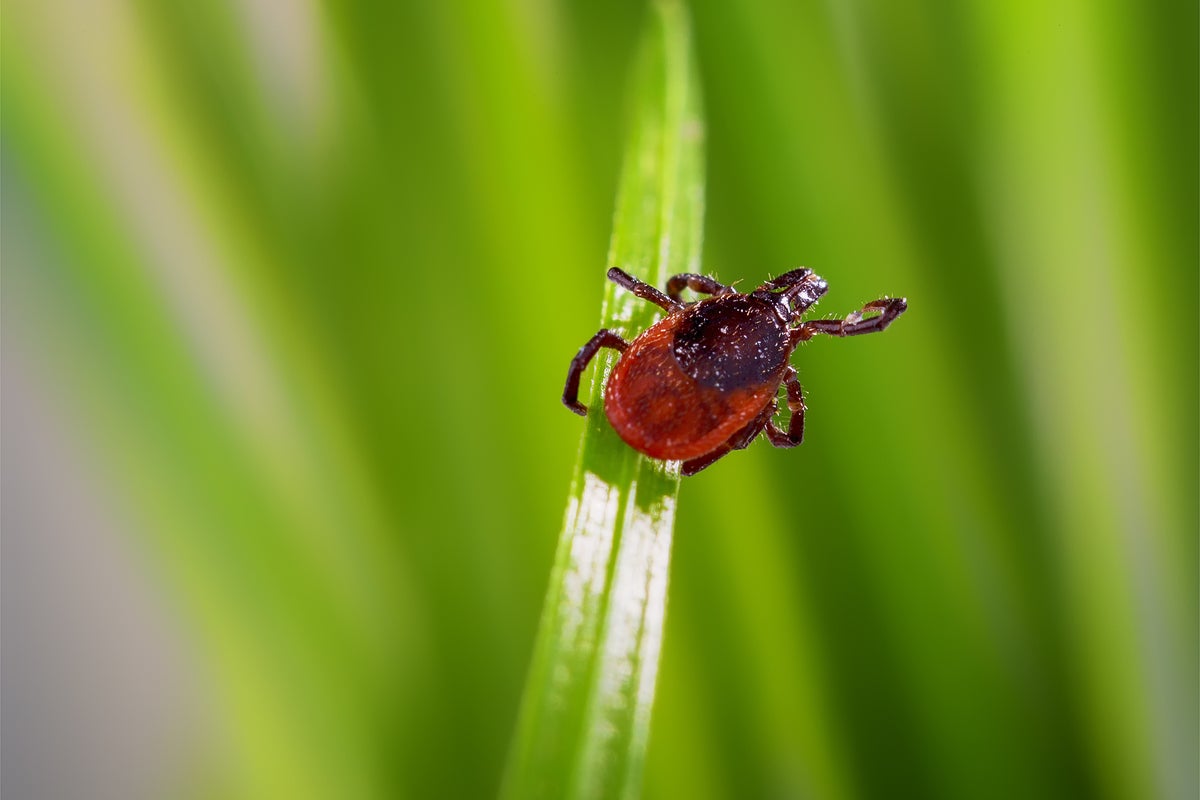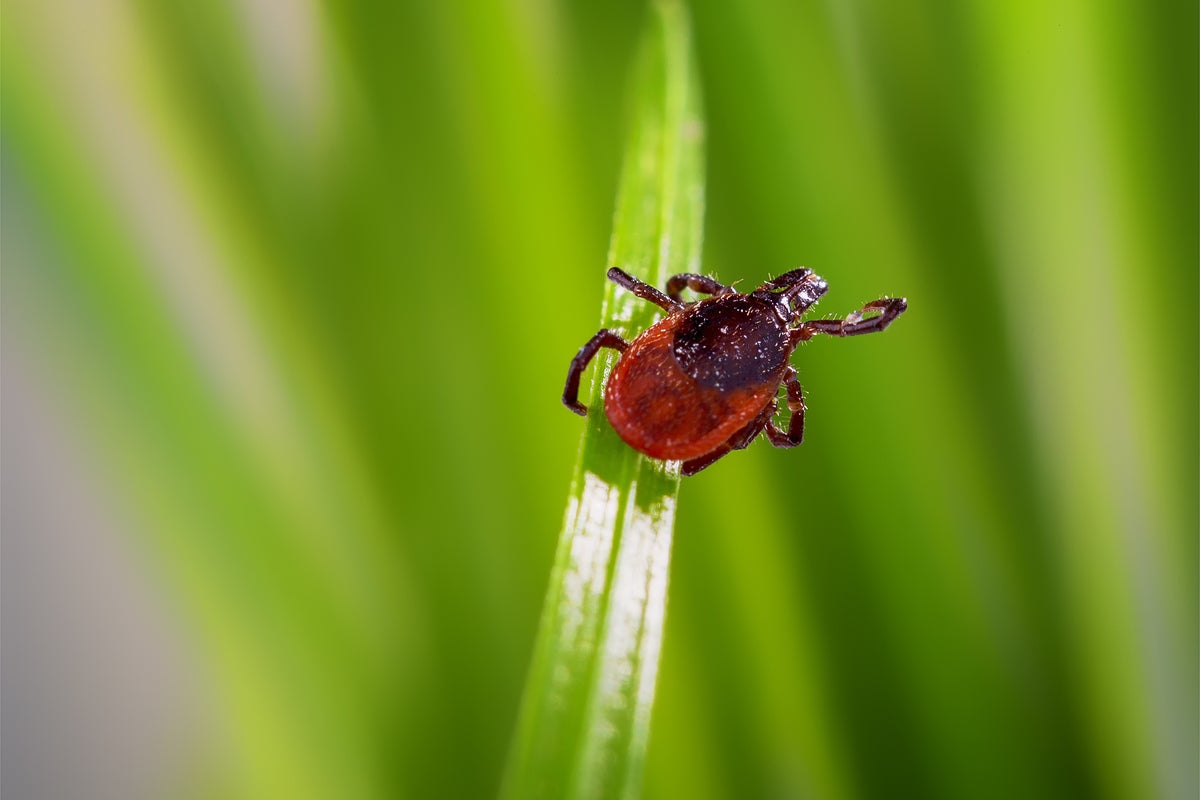Lyme Disease Threat Grows As Tick Numbers Increase In The Northeast

Welcome to your ultimate source for breaking news, trending updates, and in-depth stories from around the world. Whether it's politics, technology, entertainment, sports, or lifestyle, we bring you real-time updates that keep you informed and ahead of the curve.
Our team works tirelessly to ensure you never miss a moment. From the latest developments in global events to the most talked-about topics on social media, our news platform is designed to deliver accurate and timely information, all in one place.
Stay in the know and join thousands of readers who trust us for reliable, up-to-date content. Explore our expertly curated articles and dive deeper into the stories that matter to you. Visit Best Website now and be part of the conversation. Don't miss out on the headlines that shape our world!
Table of Contents
Lyme Disease Threat Grows as Tick Numbers Increase in the Northeast
The Northeast is facing a growing threat from Lyme disease as tick populations explode across the region. Warmer winters and expanding deer populations, key factors in tick proliferation, are contributing to a surge in Lyme disease cases, prompting health officials to issue urgent warnings. This isn't just a concern for hikers and outdoor enthusiasts; Lyme disease can affect anyone, regardless of their activity level.
Rising Tick Populations: A Perfect Storm for Lyme Disease
The increase in tick numbers isn't a localized issue; it's a widespread problem affecting states like Maine, Vermont, New Hampshire, Massachusetts, Rhode Island, Connecticut, New York, New Jersey, and Pennsylvania. Several factors contribute to this alarming trend:
- Milder Winters: Warmer temperatures mean more ticks survive the winter months, leading to larger populations in the spring and summer. This increased survival rate directly translates to a higher risk of Lyme disease transmission.
- Expanding Deer Populations: Deer act as primary hosts for blacklegged ticks (Ixodes scapularis), the primary carriers of the Lyme disease bacterium, Borrelia burgdorferi. Larger deer populations provide more breeding grounds and sustenance for these ticks.
- Suburban Sprawl: The encroachment of human development into wooded areas brings people into closer contact with ticks and their habitats, increasing exposure risks.
Understanding the Symptoms and Risks of Lyme Disease
Lyme disease, if left untreated, can cause severe and long-lasting health problems. Early symptoms often mimic the flu, including:
- Fever
- Chills
- Fatigue
- Headache
- Muscle aches
- Joint pain
A hallmark sign of Lyme disease is erythema migrans (EM), a characteristic rash that appears at the site of the tick bite. This rash often expands over several days and can be quite large. However, not everyone with Lyme disease develops this rash. Therefore, it's crucial to seek medical attention if you experience any of the symptoms listed above, especially after spending time outdoors in tick-infested areas.
Prevention and Protection: Staying Safe Outdoors
While the threat of Lyme disease is real, there are steps you can take to protect yourself and your family:
- Wear light-colored clothing: This makes it easier to spot ticks.
- Use insect repellent: Choose a repellent containing DEET, picaridin, IR3535, or oil of lemon eucalyptus. Always follow the product instructions carefully.
- Tuck your pants into your socks: This prevents ticks from crawling up your legs.
- Check yourself for ticks: Conduct thorough body checks after spending time outdoors, paying close attention to areas like the groin, armpits, and scalp.
- Remove ticks promptly: If you find a tick, remove it with tweezers, grasping it close to the skin's surface. Consult your doctor if you experience symptoms after a tick bite.
The Future of Lyme Disease Prevention in the Northeast
The increasing prevalence of Lyme disease necessitates a multi-pronged approach to prevention and management. This includes continued research into Lyme disease treatments and vaccines, public awareness campaigns to educate the public about prevention strategies, and collaborative efforts between health officials, researchers, and communities to mitigate the spread of ticks and the disease they carry. Staying informed and taking proactive steps are crucial in protecting yourself and your loved ones from this growing threat.
Learn more:
Disclaimer: This article is for informational purposes only and does not constitute medical advice. Always consult with a healthcare professional for any health concerns or before making any decisions related to your health or treatment.

Thank you for visiting our website, your trusted source for the latest updates and in-depth coverage on Lyme Disease Threat Grows As Tick Numbers Increase In The Northeast. We're committed to keeping you informed with timely and accurate information to meet your curiosity and needs.
If you have any questions, suggestions, or feedback, we'd love to hear from you. Your insights are valuable to us and help us improve to serve you better. Feel free to reach out through our contact page.
Don't forget to bookmark our website and check back regularly for the latest headlines and trending topics. See you next time, and thank you for being part of our growing community!
Featured Posts
-
 Marine Veteran Battles Ice Detention Of Breastfeeding Wife
Jul 08, 2025
Marine Veteran Battles Ice Detention Of Breastfeeding Wife
Jul 08, 2025 -
 From Lex Luthor To Beyond Nicholas Hoult On Michael Rosenbaums Mentorship
Jul 08, 2025
From Lex Luthor To Beyond Nicholas Hoult On Michael Rosenbaums Mentorship
Jul 08, 2025 -
 Air Canada Aeroplan A Comprehensive Review For Us Passengers
Jul 08, 2025
Air Canada Aeroplan A Comprehensive Review For Us Passengers
Jul 08, 2025 -
 I Will Never Regret Coming A Solo Travelers Escape From Iran Amidst Israeli Strikes
Jul 08, 2025
I Will Never Regret Coming A Solo Travelers Escape From Iran Amidst Israeli Strikes
Jul 08, 2025 -
 Rising Tick Populations Fuel Lyme Disease Concerns In The Northeast
Jul 08, 2025
Rising Tick Populations Fuel Lyme Disease Concerns In The Northeast
Jul 08, 2025
Latest Posts
-
 Guest Leaves Baby Shower After Infertility Joke A Story Of Hurt Feelings
Jul 08, 2025
Guest Leaves Baby Shower After Infertility Joke A Story Of Hurt Feelings
Jul 08, 2025 -
 Cnn Mounted Volunteers Aid In Locating Missing Individuals
Jul 08, 2025
Cnn Mounted Volunteers Aid In Locating Missing Individuals
Jul 08, 2025 -
 Archita Phukans Shocking Confession R25 Lakh Paid To Leave Prostitution
Jul 08, 2025
Archita Phukans Shocking Confession R25 Lakh Paid To Leave Prostitution
Jul 08, 2025 -
 Fergie Snubs King Charles Offer Protecting Andrews Feelings
Jul 08, 2025
Fergie Snubs King Charles Offer Protecting Andrews Feelings
Jul 08, 2025 -
 Thousands Of Flights Disrupted In The Us Holiday Weekend Travel Aftermath
Jul 08, 2025
Thousands Of Flights Disrupted In The Us Holiday Weekend Travel Aftermath
Jul 08, 2025
